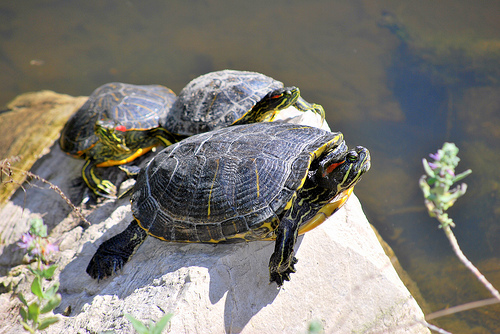Ming Dynasty painting

Photograph by tracie7779on Flickr.
The activity center for this school first was in Nanjing and then went to Beijing Ming Dynasty painting because of the change of Ming s capital. The scholar-artist style of painting (Renwen Painting, in Chinese: 人文画) became more popular.
Wen family, including painters Wen Zhengming, Wen Jia (文嘉), Wen Boren (文伯仁) and so on). Xu Wei (徐渭) from Shaoxing, Zhejiang Province, he developed a lot the enjoyable Ming Dynasty painting style of Chinese painting (Xieyi painting, 寫意畫), especially the geart enjoyable style (Daxieyi, 大寫意). Suzhou, the activity center for Wumen School painters, became the biggest center for the Chinese painting during this period. The Wumen painters they mainly inherited the tradition of Yuan scholar-artist style of painting (Renwen painting, 人文畫) and Ming Dynasty painting further developed this style into a peak.
Wumen School became the most dominant school nationwidely. The Tang Yin (唐寅), Wen Zhengming (文征明), Shen Zhou (沈周), Qiu Ying (仇英), Zhou Chen (周臣), Wen Jia (文嘉) The core place for this school was Suzhou, whose literary name was Wumen (吴门).
Many new painting skills/techniques were innovated and developed, calligraphy was much more closely and perfectly combined with the art of painting. Jiangxia School from Hubei Province was a branch of this school.
Chinese painting reached another climax in the mid-, late- Ming Dynasty. During the Ming Dynasty (1368-1644), Ming Dynasty painting Chinese painting developed greatly from the achievements in painted art during the earlier Song Dynasty and Yuan Dynasty.
The painting techniques which were invented and developed before the Ming period became classical during this period. More colours were used in painting during the Ming Dynasty.
Tang Yin, Wen Zhengming, Shenzhou and Qiu Ying, these four painters also were regarded as the Big Four of the Ming Period in Ming s painting. Xu Wei (徐渭) Chen chun (陈淳) Dong Qichang (董其昌) The core place for this school was in the southern part of Jiangsu Province at that time, but now part of Shanghai. Zhao Zuo (赵左) This school is close to Songjiang School. This school is similar to Songjiang School. Influence in Japan The Japanese Zen monk painter Sesshū Tōyō (Japanese: 雪舟等楊) travelled to Ming China, and stayed for about 10 years in Ming China learning painting. Dai Jin was the founder of this school, and he also kept a very close relationship with the Yuanti School. Lan Ying was the last master of this school, along with his family members, they formed a branch of Zhejiang School—Wulin School, because their family was located in Wulin (武林), a place in Hangzhou near the West Lake. Most of the painters from this school, they are Zhejiang natives. Lin Liang (林良), Lv Ji (吕纪) This school was organized and supported by the Ming central government, and it served for Ming royal court.
Seal brown became much more widely used, and even over-used during this period. As an outstanding scholar, his accomplishments are mainly in the field of scholar-artist painting, especially in bird-and-flower painting. Chen Chun (陳淳), although he followed the teaching from Wumen School of painting during his early years, he set up his own style in Shan-shuin painting (landscape painting, 山水畫); he formally indroduced the enjoyable style into the Chinese landscape painting, and had his own innovation in ink and wash painting, especially in his long suit—the landscape painting. Late Ming period About 1567~1644, from the Jiajing Era (嘉靖) to Chongzhen Era (崇祯). Songjiang School and Huating School were born and developed, they formed rudiment of latterly coming Shanghai School. Dai Jin (戴进), Wu Wei (吴伟), Lan Ying (蓝瑛) (Lan family) The core place for this school was Hangzhou in Zhejiang Province.
Zhejiang School (or Zhe School for short) and the school which was supported by the royal court (Yuanti School) were the dominant schools during the early Ming period. Wumen School was a large group of people, including teacher-student relationship (e.g.
Shen Zhou was the teacher of Tang Yin, Wen Zhengming and so on) and family relationship (e.g. But new schools of painting were born and grew.
The painting styles which were developed and matured during the Yuan period, still heavily influenced the early Ming painting. Before he went to Ming China, he studied Song and Yuan styles of painting (Chinese/Japanese: 宋元山水畫派) in Japan, and wanted to seek for the very origin of the Chinese painting and the real spirit inside of the Chinese art. After returning to Japan, Sesshū Tōyō set up his school and further developed his own style of painting (漢畫派), a style mixed with the Japanese native traditional elements, and became the most celebrated master of painting in his era in Japan, continuing to heavily affect Japanese history to the present day. Influence in Qing Dynasty painting No doubt, the Ming Dynasty painting provided the basis for the Qing Dynasty painting, from skill to style. .
The painting was derived in a broad scale, many new schools were born, and many outstanding masters emerged. Early Ming period About 1368~1505, from the Hongwu Era (洪武) to Hongzhi Era (弘治). The painting schools of the Yuan Dynasty still remained in the early Ming period but quickly declined or changed their styles.
